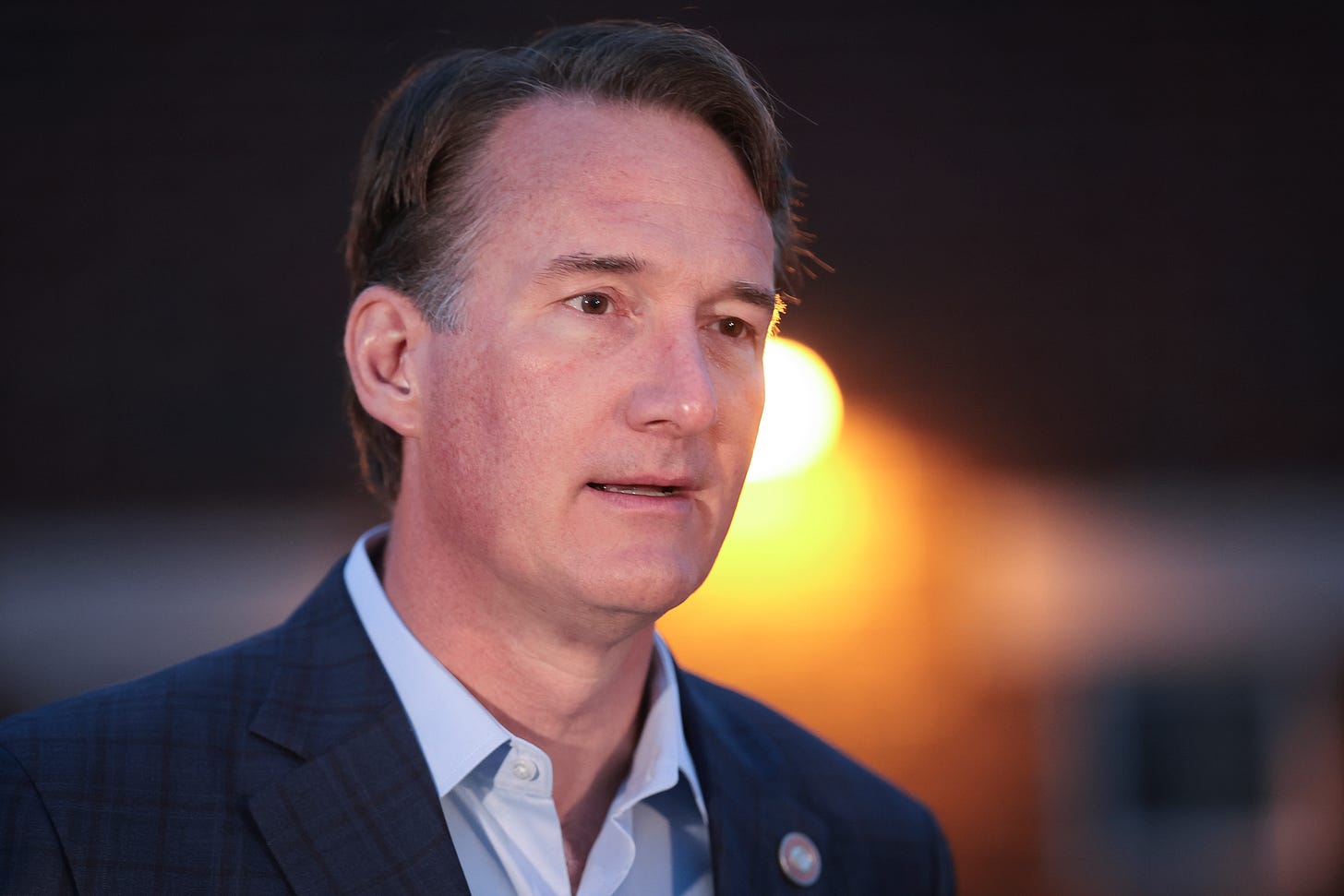Lessons for 2024 in the 2023 Elections
Defenders of democracy have new reason not to despair.

FOR THOSE WHO WORRY about the future of our democracy and the rule of law, Tuesday’s off-year elections in three states should steady the nerves. All the more so because of the larger context: In the dozens of special elections held across the country earlier this year, Democrats on average performed 10 percent better than you would expect given the partisan lean where the voting took place.
It’s easy to overlook such facts, though, when our anxiety gets tweaked by “Mad Poll disease,” to borrow a term coined by Michael Podhorzer, the AFL-CIO political strategist. There’s a natural tendency to worry about horse-race polls, even though they are often designed more to make headlines than to enrich our understanding of the present or the future. This weekend’s much-discussed New York Times/Siena poll is a case in point—but we’ll get back to that in a moment.
First, let’s look at the election night highlights.
WHILE THERE WERE SOME victories for Republicans on Tuesday—most notably the re-election of Mississippi Gov. Tate Reeves—the overall picture is not pretty for the GOP. Democrats’ strong showings in three states demonstrate that they continue to outperform expectations, and that voters continue to come out in support abortion rights.
Ohio. By a double-digit margin, Buckeye State voters approved “Issue 1,” enshrining a women’s right to choose in the state’s constitution. The amendment, titled “The Right to Reproductive Freedom with Protections for Health and Safety,” prohibits the state from restricting abortions before “fetal viability” (usually somewhere around 22 or 23 weeks) as judged by the patient’s doctor.
That result came in a very red state, and despite Republican Secretary of State Frank LaRose’s office purging 26,000 registered voters from the rolls on September 28, smack-dab in the middle of the Issue 1 campaign.
Kentucky. Similarly in Ohio’s red neighboring state, where Democratic Governor Andy Beshear won re-election against Republican Attorney General Daniel Cameron by a 52.5 to 47.5 percent (as of this writing).
Beshear supports abortion rights. Cameron doesn’t and has even refused to say whether he favors allowing abortions in cases of rape and incest. In one powerful campaign ad, a 21-year-old woman named Hadley Duvall, who was the victim of incestuous rape, looks directly into the camera and addresses Cameron, calling his position “unthinkable.”
Cameron, for his part, did his best to tie Beshear to President Biden. “It is crazy,” Cameron told a rally on Monday, “to have a governor here in Kentucky who would endorse Joe Biden.”
Maybe not so crazy.
Virginia. Republican Governor Glenn Youngkin campaigned hard to gain GOP control of both houses of the Commonwealth’s legislature so he could advance his agenda.
He failed. After Tuesday’s vote, Virginia’s Senate remained in Democratic control. And the House of Delegates actually flipped from red to blue, with Democrats winning at least 51 seats.
That happened notwithstanding Youngkin’s attempt to straddle the abortion issue by favoring a ban after fifteen weeks. But he has also stated he would sign any bill that came to his desk to protect life.
That’s typical of Youngkin’s attempt to cultivate a “centrist” label while taking conservative positions and even chasing MAGA support. Recall that, while running for governor in 2020, he campaigned on a parent’s right to ban books in public schools, including Toni Morrison’s Pulitzer-winning Beloved. On his first day in office, Youngkin signed an executive order banning the teaching of critical race theory in public schools. Never mind that CRT never was taught in the Commonwealth’s K-12 schools, Youngkin was just happy to pander to the MAGA base.
Youngkin had quietly encouraged reports about how he might be talked into getting into the presidential race. Whatever presidential ambitions he harbored took a hit Monday. He had pinned a share of them on his ability to convince voters that he needed the General Assembly turned red; voters didn’t give it to him.
WHAT DOES ALL THIS MEAN FOR 2024? A presidential campaign is very different from an off-year election, but we can draw certain conclusions. First, it’s even clearer now that abortion remains a powerful electoral driver. Second, while the polls for 2024 cannot help but worry us—as they show growing support for Donald Trump despite his telling us he will destroy American constitutionalism, and continuing concerns about Joe Biden despite his administration’s successes—Tuesday’s results remind us that we shouldn’t despair. As Podhorzer wrote over the weekend, “Americans know the difference between answering a survey and casting a ballot, even if the media doesn’t.”
Regardless of what a poll says today, Podhorzer writes, “it can’t tell us what will happen between now and Election Day that might change [voters’] minds. And it can’t tell us how being in an actual voting booth might change their actions.”
Americans constantly report dissatisfaction with our presidents and with our nation’s institutions. “A majority of voters will tell pollsters they want change.” But when it comes time to vote, Podhorzer observes, Americans have “shown themselves to be better aware of the consequences of choosing MAGA—which is why MAGA has lost 27 of the last 32 races in those six [battleground] states.”
So yes, the worrisome polling about a Trump/Biden rematch in 2024, like the NYT/Siena survey or another yesterday from CNN, should have those of us who care about democracy running scared and working hard. But the elections in Ohio, Kentucky, and Virginia remind us to keep the faith. They tell us that majorities are sensible and committed to keeping their rights. With organizing and solid messaging, they will appreciate the high stakes in next year’s election and act accordingly in the privacy of the voting booth.



